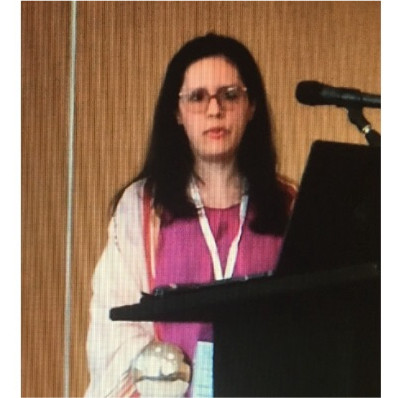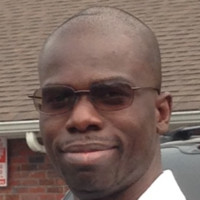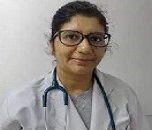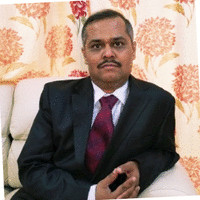Scientific Program
Keynote Session:
Oral Session 1:
- General Pediatrics | Pediatric Dentistry | Clinical Pediatrics | Pediatric Emergency Care
Title: Milk Dental Occlusion by the age of three: The Black Hole of ORALITY? Interest and responsibility of the paediatrician
Biography:
Michael Lacroix has oriented his clinical practice and research on early orthodontic treatment .In the year 1977 to 2007: Dentofacial Orthodontic Practice on the French side of the French-Swiss border and creation of ORTHOGLOBAL (Lausanne) for the promotion of pediatric orthodontics. He was a member of the French Society of Pediatric Orthodontics and teacher at the Swiss Federation of Osteopaths and laid research and communications on the early determinants of occlusion according to the early sensorimotor determinants of posture at AIOF (International Association of French-speaking Orthodontists) and CIMF - (International Club of Facial Morphology) - SEROPP (International Society for Research in Pediatric and Perinatal Osteopathy) and was a member of the Swiss Pediatric Society, CIMF , AIOF, IPOS (International Pediatric Orthodontic Society) and AAMS (Academy of Applied Myofunctional Sciences)
Abstract:
Introduction: Apart the issues about orofacial malformations, we have many studies about “dys”-type problems of orofacial area, mainly around the two orality’s definitions (communication and eating). Not so many about the global medical side of dysocclusions. And yet, there is a third vital emergency from birth and throughout the many neurodevelopmental steps: the need to deal with gravity to move and to stand upright. Throughout the sensorimotor steps, there is the parallel need to build the coordinated reference supports for correct orofacial and dental balances. Method: Throughout more than 40 years of study, and practice and experience in Pediatric Orthodontics, through my education in Bullinger’s early sensorimotor assessment (UNIL-Lausanne 2014), and through a personal continuous clinical research from 2015, I collect and compare pre-neo-and postnatal data for sensorimotor development with cranio-facial dysocclusions (more than 150 cases) Results: Through this new integrative and anterograde analysis of the early and tight coordination between the implementation of the first 3D determinants for respiratory-occlusal and postural (R.P.O.) balances, we now have the material to understand the missing link between these three, R.P.O. dys-balances. We can propose a helpful daily tool for paediatricians for a synthetic assessment of this global 3D R.P.O. balance, by the age of three. Even further, the Milk Dental Occlusion, by all its etiologic determinants and its neurophysiological implications, and with our 3 primitive oral sensorimotor loops theory, could be the basis to think about a third definition clarifying the “black hole” of human orality, and bring together all those concerned by the two sides of the issue, psychological and somatic.
Title: Wellbeing lifestyles in pediatrics
Biography:
Dora Dragoni Divrak is medical doctor and got her degree with Bologna Alma Mater University. She starts being fond of metabolism related to neuroscientific aspects, and then she begins studying independently “reward system”, and writing articles about this topic. She follows courses to be expert in other related issues like nutritionist, personal and mental trainer. She starts understanding that lifestyle is the key to prevent and to create health. She specializes in acupuncture with AMAB in 2016 with a thesis about acupuncture and salutogenesis related to neurosciences, and in 2017 she gets her online PhD with IBAM about alternative medicine and lifestyle. She is also fertility coach. Now she is author and she writes articles for italian and international journals. She is also keynote speaker for medical events. She finally likes helping organizing medical conferences.
Abstract:
Children lifestyle is very important on the whole individual life: what we learn in infancy and childhood impacts on our entire existance . So i will take into consideration some lifestyle tips in order to be better doctors and parents, so to get more information and also more awareness about life habits and child wellbeing. Health is mostly considered not only the absence of disease but a full wellness condition . Some age classifications follow in order to better understand child life. Bonding/attachment is the main feeling connecting a baby and parents: it starts even in utero, when hormonal and neurotransmitter balance begins modifying. It spreads at birth with a storm of molecules, and then characterizes all phases of our existance. It is important to encourage it and to develop it as well . Lactaction and breastfeeding are also important moments for baby’s life. It is from now that healthy life habits start. It is fundamental from three points of view: 1. reduction of diabetes risk 2. direct vaccination thanks to mother’s antibodies 3. again attachment mother-baby. Milk is full and rich in nutrients and vitamins. Breastfeeding is a human right for UNICEF and FAO since 1996 . Weaning is really basilar for babies: solids start being introduced in diet, as purees then in small pieces parallely with baby tooth growth too. Eggs and fish are the last to be eaten. Child nutrition should follow the mediterrenean diet, or MyPlate model in order to have prevalence of healthy foods like vegetables and fruit . We have to promote physical activites even in babies since they start developing even from a motor point of view. I will talk about such abilities and their development according to the different months and years. For a child at scholar age, we can think to sport games . Maria Montessori life and pedagogy: she is well known all over the world since she studied as medical doctor children abilities to learn and grow. She bases her thought on the idea of the “absorbent mind” of babies and kids. She gives examples of activities to do, like keeping tidy kitchen and propre room, and do simple daily routine . Positive parenthood is a great target to have. We are a model for children and we should always be at our best. The bioechological model is to remember: child is influenced by every environment. I will also synthetize parents features . I take into consideration traditional chinese medicine remedies. They are based mainly on lifestyle suggestions but also on TuiNa the medical massage on acupoints and meridians. Cupping can be also practiced . Finally I talk about art-therapy that helps children in expressing their emotions even when sick (onchological diseases, distrophy, asmathic problems, epilepsy). It is a way to destress and even diagnosis can improve . I conclude remembering the importance of lifestyle habits and knowledge in order to be preventive and to help babies and children health and wellbeing.
Title: Strategies to Help in the Improvement of Pediatric Emergency Care Quality in the United States
Biography:
Abstract:
Statement of the Problem: The provision of quality as pediatric emergency is the beginning point of ensuring health growth for children. This is done by establishing an enabling environment and infrastructure that provide the much needed care to pediatric patients. Improvement of emergency knowledge among professionals in the field is also necessary for long term success and efficiency. Also of importance is taking stock of threats to pediatric patient safety, and then see what is being done within individual healthcare institutions in order to develop best practices to be rolled out across the country. The findings, together with contents of other research projects would be used to develop long term recommendations.
Findings: Individual pediatric hospitals and emergency services have been implementing evidence based approaches to ensuring patient safety, especially reducing the frequency of trauma and errors in the course of treatment processes. Government agencies dealing with healthcare issues as well as non-profit organization in the sector are involved in providing the much-needed guidance on patient safety. There is continued research that is improving awareness of medical errors involving pediatric patients. Continued research on this issue is being undertaken so as to ensure that best strategies to reduce its occurrence are employed accordingly.
Recommendations:Raising awareness on patient safety at an institutional level and encouraging employees to volunteer such information can aid in reducing prevalence of such cases. Appointment of patient safety manager at every facility would help in ensuring continued improvement and reduction of errors. Individual employees must feel confident in reporting near misses and errors without reprisal from management. The use of pediatric human simulators and associated technologies would equip healthcare workers with opportunities to perfect their patient handling skills without making mistakes on real human patients. An additional approach is using barcodes system to label medicine to ensure that correct ones are being a insisted to patients.
A PHP Error was encountered
Severity: 8192
Message: trim(): Passing null to parameter #1 ($string) of type string is deprecated
Filename: pastconference/past-program-schedule.php
Line Number: 354
Backtrace:
File: /efsdata/meetingsint-com/application/views/pastconference/past-program-schedule.php
Line: 354
Function: trim
File: /efsdata/meetingsint-com/application/controllers/Pastconference.php
Line: 128
Function: view
File: /efsdata/meetingsint-com/index.php
Line: 317
Function: require_once
Title: Recent developments of necrotizing enterocolitis
Biography:
Raktima Chakrabarti is a neonatologist and paediatrician in India. She is practising in Gurgaon, Haryana, India. She has done her medical graduation and post graduation in paediatrics from renowned universities of India and after that her carrier became enriched with the European university hospital’s experience in neonatology. Her expertise is in Neonatology and paediatrics and her main focus is the respiratory and gastrointestinal problems of newborns, specifically the preterm newborns. She has taken parts in multiple studies and published numerous research reports in eminent journals. She also authored multiple nenatology text books. She is in the reviewer panel of numbers of eminent pediatric journal.
Abstract:
Necrotizing Enterocolitis (NEC) is most common gastrointestinal infection in predominantly preterm neonates. It needs multifaceted approach for the treatment and prevention. The first case of nectrotizing enterocolitis was reported in 1823. But till now there is hardly any definite treatment in advanced stages, prevention has the main role in this disease.
In NEC, the intestinal mucosa actually excoriates, becomes totally necrosed soggy and dies off. What is the actual cause of this death and why it is more prevalent in preterm, is not fully clear. Some of the recent research has thrown some lights on it. There is a great role of Toll like receptor 4 (TLR-4) for the pathogenesis. These receptors identify the pathogen (The bacterial cell wall lipo- polysaccharides-LPS) and stimulate the host to react to it, induce a pro inflammatory reaction. This activates cytokine inducing transcription factor NFkB. This TLR4 signal induces endoplasmic reticulum and enterocyte apoptosis along with reduction of mucosal repair. This results in mucosal breakdown and bacterial migration and sepsis. This TLR4 expression specifically occurs on the intestinal progenitor cells within the crypts. This TLR4 expression is higher in preterm newborn than in full term. Breast milk is a strong TLR4 signaling inhibitor. It is well enriched with NO precursor molecule and human milk oligosaccharides, which increase intestinal wall perfusion, prevent an exaggerated reaction to bacterial cell wall and NEC. Amniotic fluid also have protective role through higher concentration of epidermal growth factor which is an an inhibitor of TLR4 signaling. Probiotic bacterial DNA also can inhibit the TLR4 signaling.Disruption of gut microbiota and its homeostasis is also an important factor for NEC development.
Oral Session 2:
- Pediatric Nursing | Pediatric Dentistry | Pediatric Psychology and Infections | Pediatrics Surgery | Pediatric Oncology
Title: Post COVID MISC in PICU practical approach and management strategies
Biography:
Mohamed Ebraheem Elmesserey is a Paediatric Intensivist at Al Jalila Children’s with more than 20 years of experience in both Pediatric intensive care unit and neonatal intensive care unit. Dr Mohamed graduated from Alexandria Faculty of Medicine, Egypt one of the largest and reputable University hospital in Egypt. He completed a residency programme at Alexandria University Children’s Hospital and obtained his master’s degree in paediatrics and neonatology. He is also a membership of royal colleague of pediatric and child health London UK. Dr. Mohamed was working as senior specialist in Kuwait for more than 13 years in both NICU and PICU in one of the major governmental hospital. Dr. Mohamed has an interest in PICU and management of acute bronchial Asthma, ARDS, DKA, status epilepticus and all metabolic emergencies.
Abstract:
Multisystem inflammatory syndrome in children (MIS-C) is a serious condition that appears to be linked to coronavirus disease 2019 (COVID-19). Most children who become infected with the COVID-19 virus have only a mild illness. But in children who go on to develop MIS-C, some organs, and tissues — such as the heart, lungs, blood vessels, kidneys, digestive system, brain, skin, or eyes — become severely inflamed. Signs and symptoms depend on which areas of the body are affected. MIS-C is considered a syndrome — a group of signs and symptoms, not a disease — because much is unknown about it, including its cause and risk factors. Identifying and studying more children who have MIS-C may help to eventually find a cause.
A PHP Error was encountered
Severity: 8192
Message: trim(): Passing null to parameter #1 ($string) of type string is deprecated
Filename: pastconference/past-program-schedule.php
Line Number: 354
Backtrace:
File: /efsdata/meetingsint-com/application/views/pastconference/past-program-schedule.php
Line: 354
Function: trim
File: /efsdata/meetingsint-com/application/controllers/Pastconference.php
Line: 128
Function: view
File: /efsdata/meetingsint-com/index.php
Line: 317
Function: require_once
Title: Challenges of appropriate referral of Blood Borne Infection (BBI) screening and follow-up amongst looked after Children
Biography:
Arunava Dhar is an experienced paediatrician with special interest in tertiary Neonates and neonatal transport , ex-Chief Resident of Addenbrookes Hospital, Cambridge with a demonstrated history of leading in digital healthcare company based in London . He is skilled in Healthcare Information Technology (HIT), Digital Healthcare Industry, Clinical Research and Critical Care. He is having strong healthcare professional having wide range of experience of working in primary and secondary care with regard to Pediatrics
Abstract:
In UK, looked after children (LAC), (Children Act 1989) are defined as children who are accommodated by a local authority, for a continuous period of more than 24 hours or are subject to a care order or a placement order. In 2018, there were 75,420 looked after children in England, which is steadily rising and is up by 4% from 2017.Blood-borne infection (BBI) are caused mostly by viruses that some people carry in their blood and can be spread from one person to other. In our specialist community service we run 2-3 specialist LAC clinics per week in 3 different locations. This specific cohort of children were seen for review and initial health assessment in our specialist LAC clinics. Our aim was to assess the challenges of our service provision for appropriateness of referral for BBI screening and follow-up through a service evaluation project. We collected the data retrospectively for the period of February 2019 to March 2019 of successive patients using electronic patient records.During the period we assessed 74 children in our specialist LAC clinic. Out of those 74 children 24 children seen by us (32 %) were placed out of county, whilst 13 children (17%) from other authorities placed in the county, whereas 9 (12 %) children came into and out of our care within these 2months. Both health assessment done as LAC and stayed with us for follow-up of BBI screening were 28 children (37%). A risk assessment was carried out based on our best practice guidance which encompasses family health history and current health history. Amongst all 41 children (including placed from other counties) 6 children (14%) were referred for BBI screen and follow up.High propensity to migrate between counties within quick succession, unavailability of antenatal screening result and clear pathway for obtaining and documenting consent alongside passing on result are found to be real challenges for appropriate referral for BBI screening and follow-up. If parental health forms are being completed as soon as practicable it would be beneficial, but we acknowledge that there are challenges for social care in getting those completed.
A PHP Error was encountered
Severity: 8192
Message: trim(): Passing null to parameter #1 ($string) of type string is deprecated
Filename: pastconference/past-program-schedule.php
Line Number: 354
Backtrace:
File: /efsdata/meetingsint-com/application/views/pastconference/past-program-schedule.php
Line: 354
Function: trim
File: /efsdata/meetingsint-com/application/controllers/Pastconference.php
Line: 128
Function: view
File: /efsdata/meetingsint-com/index.php
Line: 317
Function: require_once
Title: Cow Milk Protein Allergy; Update and Challenges
Biography:
Mahmoud Metwaly Taha has a master degree in paediatrics and neonatology awarded from Zagazig university, Zagazig, Egypt. Currently working as senior neonatologist at Saudi German Hospital, Saudi Arabia.
Abstract:
Cow’s milk protein allergy (CMPA) is caused by a reproducible immune-mediated response to milk proteins and tends to present during the first few months of life. This response can vary significantly from an immediate reaction within 2 hours of ingestion to a more delayed reaction, which can occur anywhere between 2 and 72 hours later. A delay in diagnosis can cause significant child and parental distress, while overdiagnosis can lead to an unnecessary elimination diet. CMPA can be confused with lactose intolerance which is a non-immune mediated response as a result of lactase enzyme deficiency. We review the diagnosis and management of CMPA in this article along with future directions.
A PHP Error was encountered
Severity: 8192
Message: trim(): Passing null to parameter #1 ($string) of type string is deprecated
Filename: pastconference/past-program-schedule.php
Line Number: 354
Backtrace:
File: /efsdata/meetingsint-com/application/views/pastconference/past-program-schedule.php
Line: 354
Function: trim
File: /efsdata/meetingsint-com/application/controllers/Pastconference.php
Line: 128
Function: view
File: /efsdata/meetingsint-com/index.php
Line: 317
Function: require_once
Title: Blau Syndrome: A Rare Granulomatous Disorder
Biography:
Gaurav Rajauria is an Assistant Professor by profession and works with one of the private university in Aligarh. He holds a doctor of pharmacy in Pharmacy and currently pursuing a Master in Public health degree in Indian institute of public health sciences, Gujarat. Gaurav has 1 years of research experience.
Abstract:
Blau syndrome is a rare condition characterized by the triad of granulomatous skin lesions, symmetric polyarthritis with boggy joint swellings, and ocular inflmmation. It has an autosomal dominant mode of inheritance and occurs due to a mutation in CARD-15/NOD-2 gene which encodes the cytosolic NOD2 protein, a key molecule in the regulation of innate immunity. Clinical onset is generally in the 1 st year of life and is characterized by articular, cutaneous, and ocular noncaseating granulomatous inflmmation, which can be variably associated with a heterogeneous systemic spectrum.









